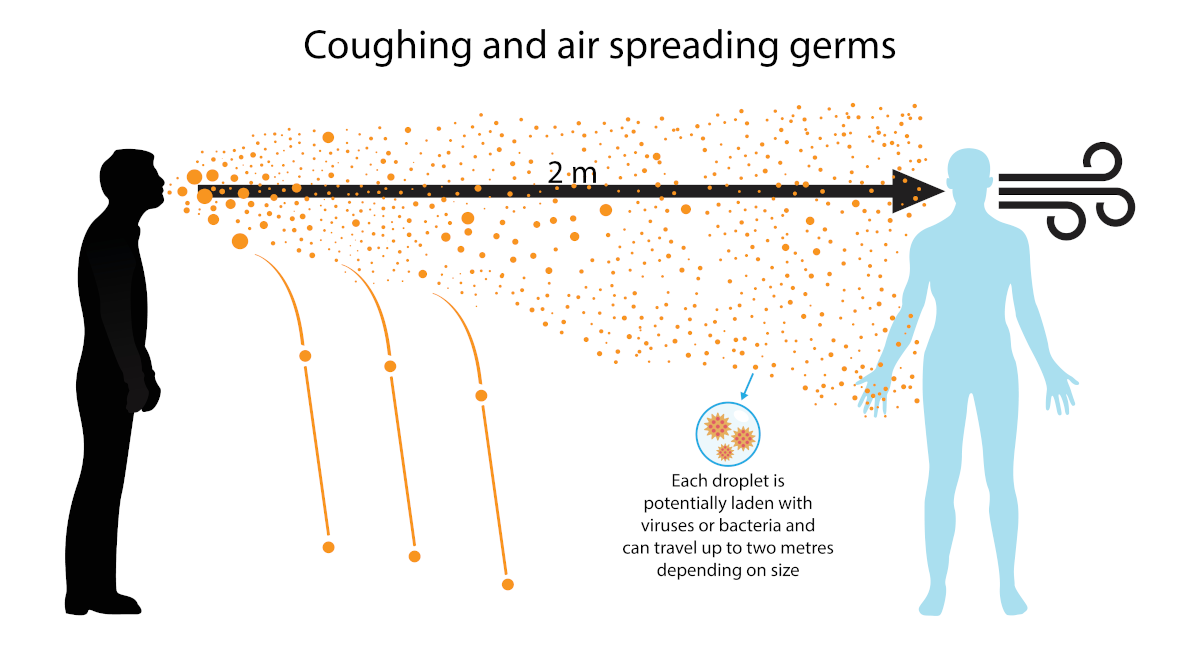Understanding Coronavirus
The 2019 Novel Coronavirus or COVID-19 was first identified in Wuhan, Hubei Province, China and has quickly spread across the globe – including to Australia. To date, there have been more than 117,000 confirmed cases of Coronavirus (COVID-19) around the world with over 4,200 reported deaths.
Coronaviruses (CoV) are a family of viruses that can be transmitted between animals and people. Coronaviruses can cause illnesses ranging from the common cold to more severe diseases such as Severe Acute Respiratory Syndrome (SARS).
Infection of Covid-19 can lead to respiratory symptoms such as cough, fever, shortness of breath and breathing problems. In more severe cases, the virus can cause pneumonia, severe acute respiratory syndrome, kidney failure and fatalities.
Managing the risks from COVID-19
Coronavirus (COVID-19) is not just something you might catch while socialising or taking a trip but is also a potential hazard for people at work. Persons conducting a business or undertaking (PCBUs) have a duty of care to put measures in place to protect workers health and safety and manage the risk of contracting the virus.
To comply with WHS regulations, PCBUs must identify hazards at the workplace; in this case, Covid-19 is a hazard, and then do what is reasonably practicable to minimise those risks.
6 step coronavirus action plan for your business
- Your first actions should be to keep up to date with the latest COVID-19 information and advice to help in managing the risk. The best way to do this is to monitor the Australian Government Department of Health, the Smartraveller website if travelling for work, and any advice from state or territory government agencies (see the end of this blog post for sate and territory resources). Avoid advice from friends, social media or other non-official sources as those sources of information can be conflicting or incorrect.
- Ensure workers are aware of and kept up to date on information relevant to them regarding Coronavirus by directing them towards related official websites or printing and handout information on the risks and infection controls associated with the virus.
- Review your organisation’s policies and procedures for infection control or, if none are in place, develop and promote policies to keep your workers informed.
- Providing clear advice to workers about actions they should take if they think they may have the symptoms of Coronavirus. Include information for workers on:
- when they should not attend work or travel.
- isolation periods for those infected as per advice from the Department of Health.
- Information and links to relevant services should they require support.
- Put in place contingency plans to manage potential staff absences. The latest advice is that a person testing positive for COVID-19 must isolate themselves in their home or health care setting until Public Health authorities inform them is safe to return to your usual activities.
- Continue to provide regular updates to workers about the virus and any changes to company policies or procedures.
How to prevent the spread of Coronavirus?
Good personal and workplace hygiene practices are the best defence against most viral infections:
- Ensure frequently touched surfaces are cleaned with a detergent solution
- Clean surfaces and fittings after any spillage or are visibly unclean.
- Workers should wash hands often, with soap and water, or use alcohol hand sanitisers as needed.
- Cover mouth with an elbow when coughing or sneezing, do not use your hands
- Avoid physical contact with others if feeling unwell (stay more than 1.5 meters from people).

Information and resources (as complied by Safe Work Australia)
Australian State and Territory WHS Regulators
Comcare - guidance for workers and employers This webpage includes advice on WHS obligations, managing risks and compensation coverage.
SafeWork NSW - Coronavirus
WorkSafe Victoria
Queensland - WorkCover QLD- Coronavirus (COVID-19) workplace risk management
Northern Territory - NT WorkSafe - Getting your workplace ready for COVID-19 (Coronavirus)
Tasmania - WorkSafe Tasmania - Novel coronavirus (COVID-19)
State and territory health departments and other agencies
New South Wales
Victoria - Department of Health and Human Services - Coronavirus disease (COVID-19)
Northern Territory - Department of Health - Novel coronavirus (COVID-19) latest updates
Australian Capital Territory - ACT Health - Latest information about novel coronavirus (COVID-19) in the ACT
Western Australia
Queensland - Queensland Health - Novel Coronavirus (COVID-19)
Additional sources
World Health Organization
Author - Craig Cruickshank is the HSEQ Manager and Senior Technical Advisor at SafetyDocs by SafetyCulture.
Craig comes from a construction and environmental background, with experience in both the private and public sectors and is passionate about making health and safety information easy to find and understand for everyone.
Learn more about Craig's work on LinkedIn
Share This Article
